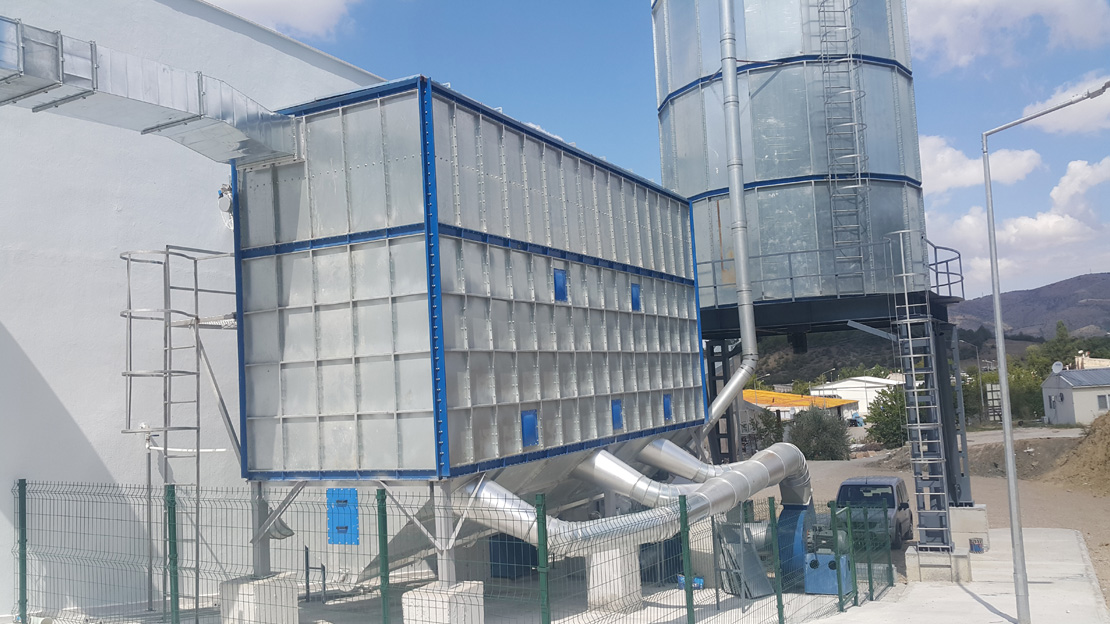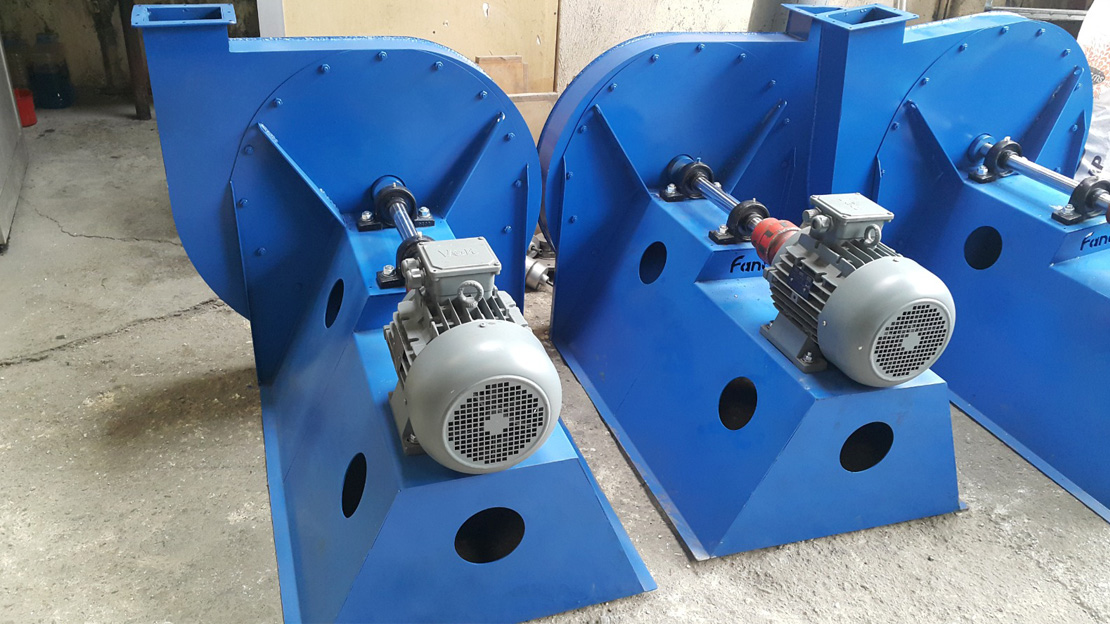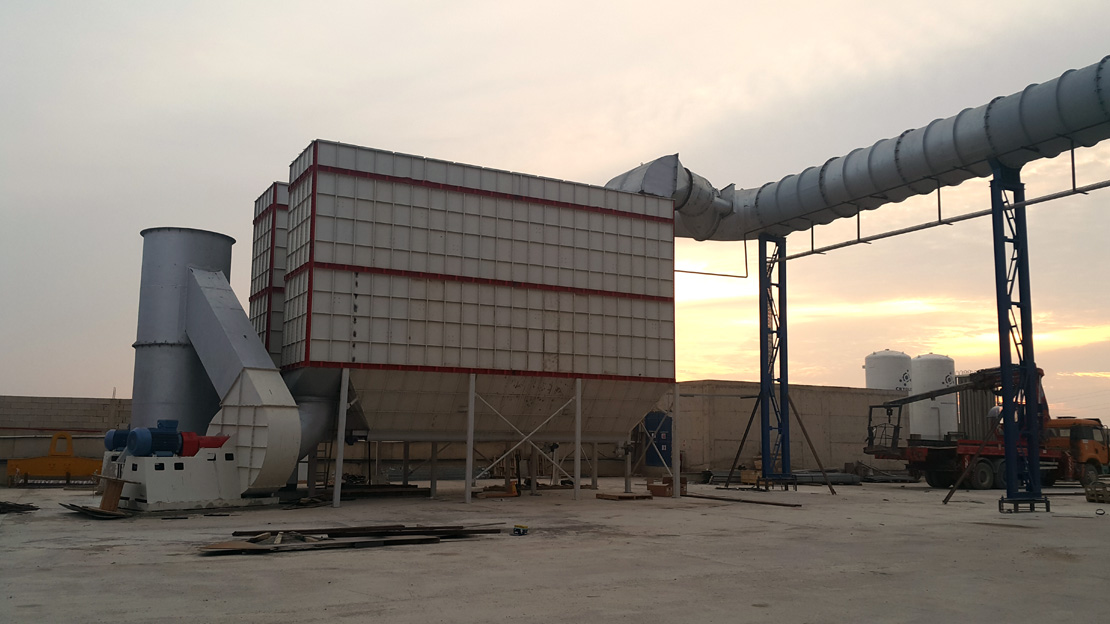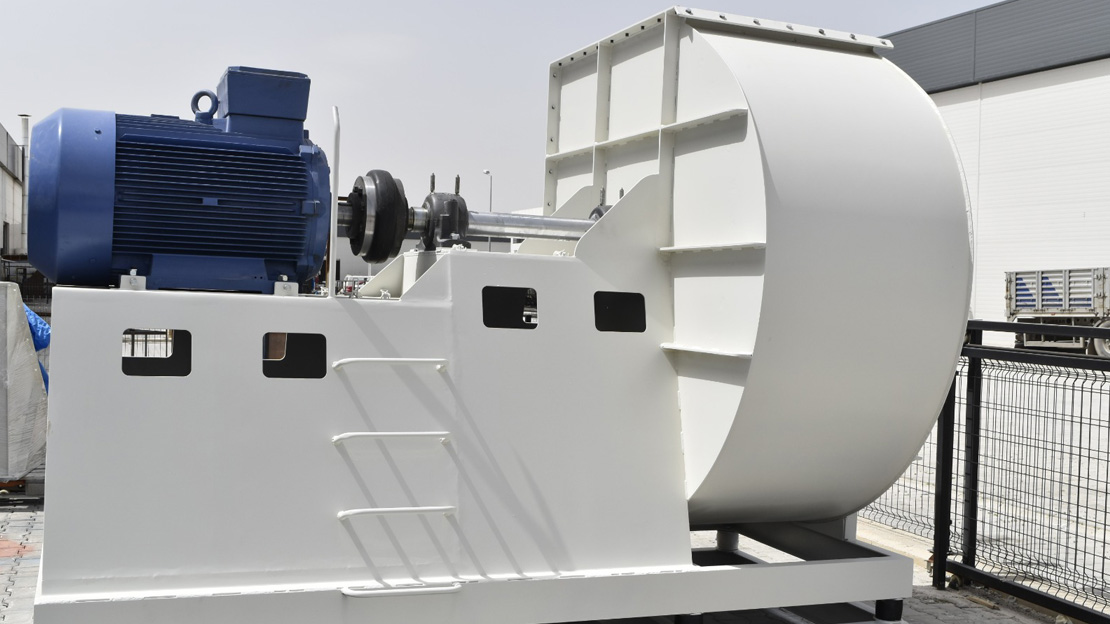








What is Industrial Filter? An industrial fan is a machine whose primary function is to supply and accommodate a large flow of air or gas to various processes of many industries. This is achieved by rotating several blades connected to a hub and shaft and driven by a motor. The flow rates of these fans vary according to their application (For more information, visit our applications page). A blower is another name for a fan that operates where the flow resistance is mainly on the downstream side of the fan. Most industrial fans can be divided into one of two general types: centrifugal fans and axial fans. Axial Fans Sometimes known as impeller fans, this type of fan moves large volumes of air at relatively low pressures. Air enters and exits the fan along the axis of the fan hub. Uses range from small applications such as cooling electronics to ventilating buildings and tunnels. The axial design uses axial forces to drive the movement of air or gas and rotates a central hub whose blades extend radially from its outer diameter. The fluid moves parallel to the shaft or axis of rotation of the fan wheel. The axial fan impeller is usually located in a short section of the cylindrical duct system to which the inlet and outlet ducts can be connected. Axial fan types have fan wheels with diameters that typically range from less than one foot (0.3 meters) to 30 feet (9 m), although axial cooling tower fan wheels can exceed 82 feet (25 m) in diameter. In general, axial fans are used where the main requirement is a large flow volume and in centrifugal design where both flow and higher pressures are required.
Axair supplies framed axial fans, plated axial fans, cased axial fans and EC high efficiency axial fans in standard or custom specifications. Visit our axial fans page for more information. Centrifugal Fans The centrifugal design uses centrifugal force produced by a rotating disc with blades mounted at right angles to the disc to move air or gas and increase its pressure. The assembly of the hub, disc and blades is known as the fan wheel and often includes other components with aerodynamic or structural functions. The centrifugal fan impeller is typically contained within a scroll-shaped fan housing. The air or gas inside the rotating fan is exhausted from the outside of the wheel to an outlet at the largest diameter of the housing. This simultaneously draws more air or gas from the central hole to the wheel.
Bu site çerezler kullanır. Sitede gezinmeye devam ederek çerezlerimizin kullanımını kabul etmiş olursunuz.
Daha fazlası